In Pictures: States Of America: Photography From The Civil Rights Movement To The Reagan Era
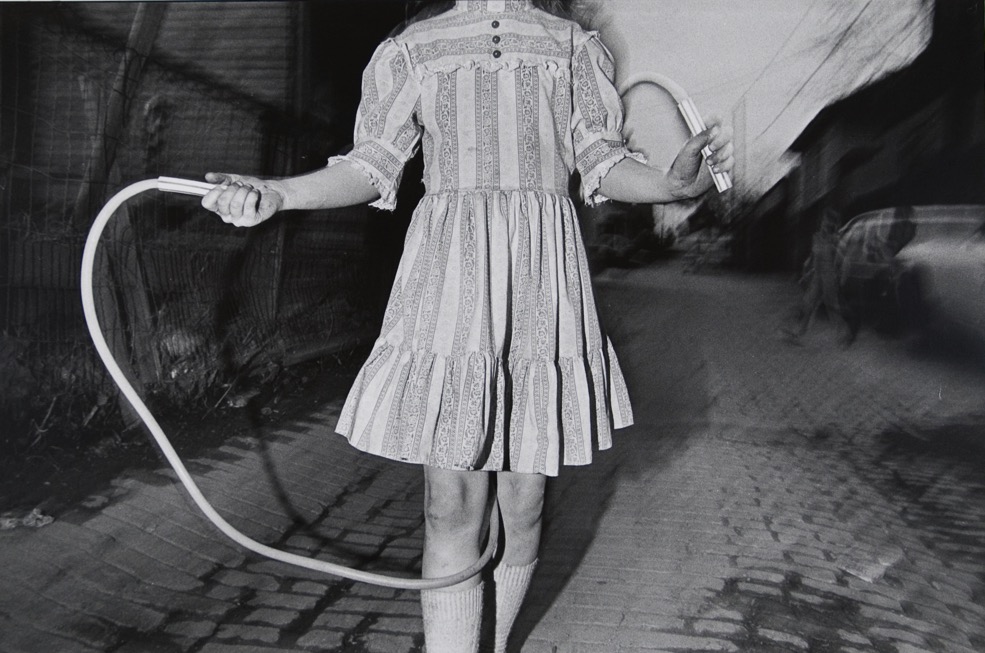
From police lines and classic cars to saxophone players and the New York subway: co-curators Abi Spinks and Irene Aristizábal select their favourite shots from Nottingham Contemporary’s new exhibition, States of America…
Abi Spinks’ choices:
Above: Mark Cohen, Jump Rope (1975). Like most of Mark Cohen’s photographs, it is a discomforting image. The harsh flash highlights the headless body and the arc of the skipping rope, so that they appear superimposed onto the background. It is spare, confrontational, and in my mind, indelible.
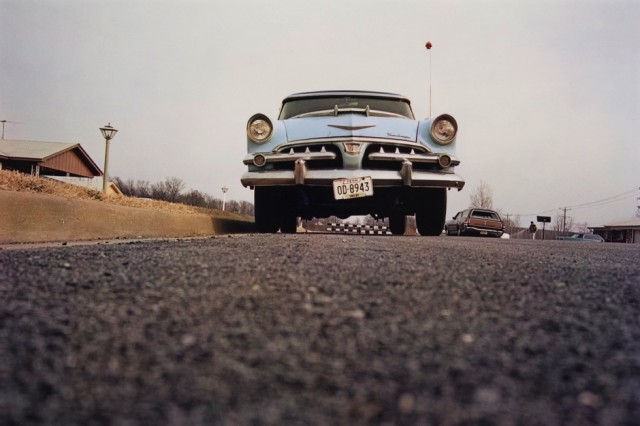
Above: William Eggleston, Memphis Dust Bowls Vol I (1970). Eggleston is something of a hero to me, one of my all-time favourite artists. His technique of photographing from unusual angles, like this image taken with the camera on the ground, lends the works an enigmatic quality. With Eggleston, I feel like there is always a hint of a darker narrative, however mundane the scene.
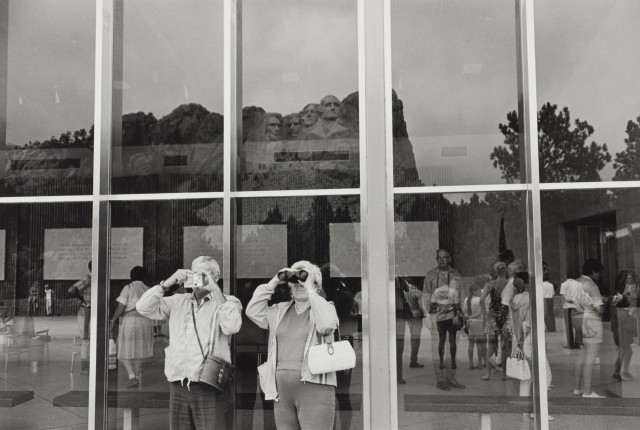
Above: Lee Friedlander, Mt Rushmore, South Dakota (1969). This is an image that says a lot about looking and people’s inability to really focus and be present in a moment. The spectacle of the title is only seen in reflection in the visitor centre windows, instead we are presented with tourists mediating their experience through binoculars, a camera or postcards in the gift shop. A modern version of this image would no doubt include a selfie stick.
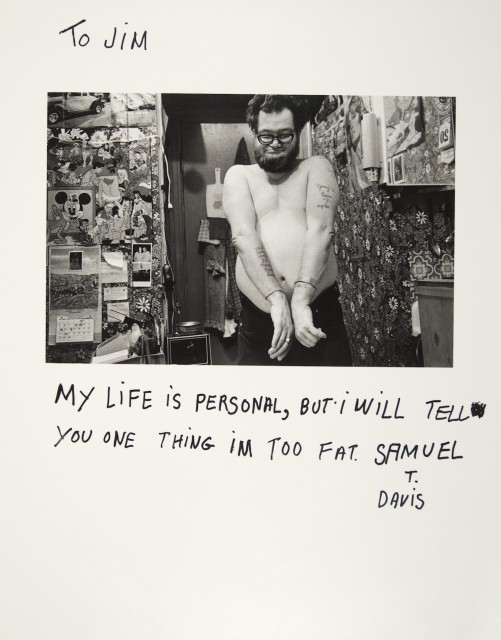
Above: Jim Goldberg, Rich and Poor series (1977). A humorous example from the Rich and Poor series. Having the subjects write in their own hand below their image is a clever device employed by the photographer; it lends the subject greater agency and gives the photograph a more intimate and personal feel.
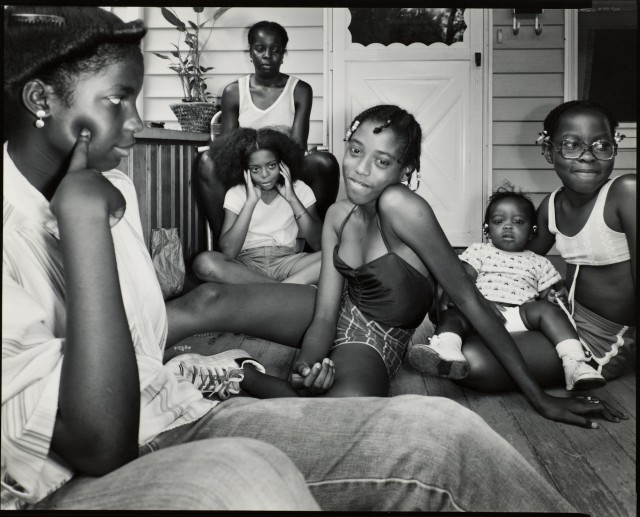
Above: Nicholas Nixon, Hyde Park, Massachusetts (1979). There are several photographs like this by Nixon in the exhibition, featuring people on their front porches or outside their homes. I enjoy the warmth and intimacy he manages to convey in these informal gatherings of family, friends and neighbours. The compositions are tight, with people almost layered up on top of one another. Not an inch of space is wasted in the image.
Irene Aristizábal’s choices:
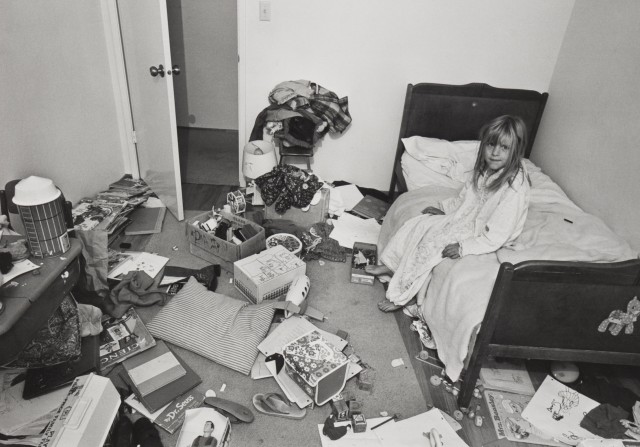
Above: Bill Owens, “I wanted Christina to learn some responsibility for cleaning her room, but it didn’t work” (c. 1973). In his Suburbia series, Bill Owens portrays life in the early 70s, in a newly built Californian suburb. He asked the people he photographed to write a note about themselves and this girl’s mum or dad comment is very amusing when we see the beautiful mess the girl’s room is in. To me this photograph exemplifies aspirational thinking, which drove the white middle classes to the suburbs in search of the perfect American life. It is also a timeless image: many of us have been that messy child or that parent wanting our child to tidy up.
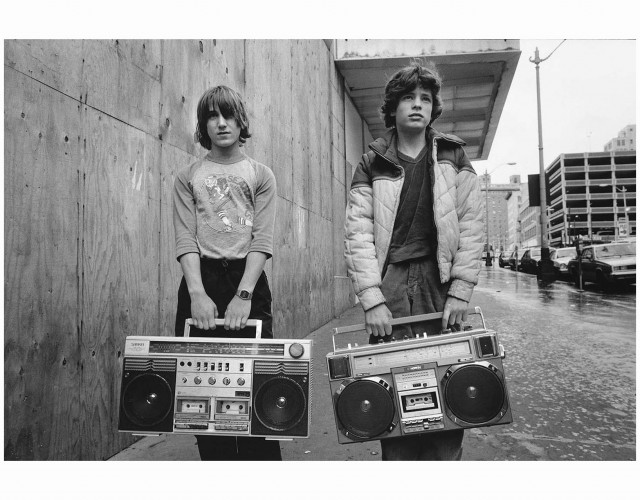
Above: Mary Ellen Mark, White Junior and Justin (1983). Such an iconic image for the 1980s. Two teenagers in the streets of Seattle with their massive boomboxes. Mary Ellen Mark photographed teenagers living in the streets of Seattle at a time when the city was considered the best place to live in the US.
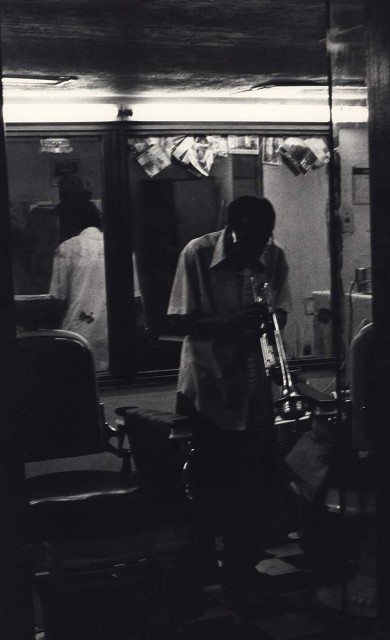
Above: Ming Smith, Love Barber Shop Jazz (from the August Wilson series), Pittsburgh, PA (1993). In Love Barber Shop Jazz, a man is playing his saxophone in an empty barber shop after sunset. Smith’s highly contrasted and slightly blurry image takes you into the magical place the sax player is at, you can hear the sound coming out of the image.
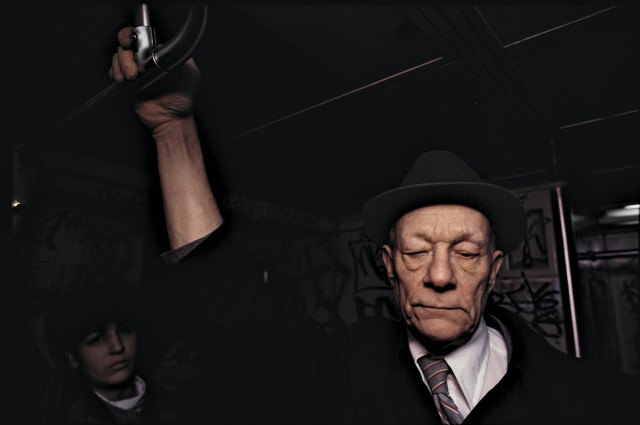
Above: Bruce Davidson, Subway, New York (1979). I really love Bruce Davison’s Subway series. He spent a year photographing in New York City’s subway in 1979 and the result is a striking series. The prints we have in the show are dye transfer prints and the colours are very rich. This man is in his own world within a crowded subway. Davidson shot some amazing portraits during his excursions in the subway capturing the diversity of New York City’s inhabitants.
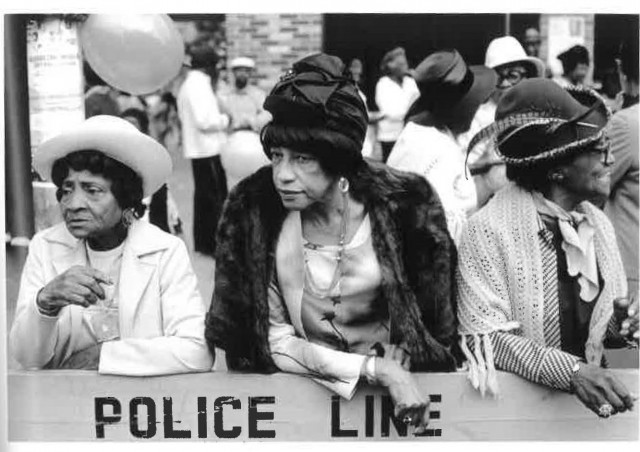
Above: Dawoud Bey, Harlem, New York (1978). These three very elegant ladies waiting for a parade behind a Police Line barrier in Harlem reminds us of Harlem’s vibrant past. Bey extensively portrayed Harlem’s inhabitants in the late 1970s and his images are a fantastic celebration of a neighbourhood with a rich history – centre stage of the Harlem Renaissance in the 1920s and the Civil Rights Movement in the 60s.
As told to Laura Robertson
See States of America: Photography from the Civil Rights Movement to the Reagan Era from now until 26 November 2017 at Nottingham Contemporary – FREE
Full image credits:
Mark Cohen, Jump Rope, 1975, gelatin-silver print. © Mark Cohen, courtesy of Wilson Centre for Photography
William Eggleston, Memphis Dust Bowls Vol I, 1970, dye-transfer print. © Eggleston Artistic Trust. Courtesy David Zwirner, New York/London and Wilson Centre for Photography
Lee Friedlander, Mt Rushmore, South Dakota, 1969, gelatin-silver print. © Lee Friedlander, courtesy of Fraenkel Gallery, San Francisco and Wilson Centre for Photography
Jim Goldberg, Rich and Poor series, 1977, gelatin-silver print, courtesy of Wilson Centre for Photography and Magnum Photos
Nicholas Nixon, Hyde Park, Massachusetts, 1979. Courtesy of Fraenkel Gallery, San Francisco and Wilson Centre for Photography
Bill Owens, “I wanted Christina to learn some responsibility for cleaning her room, but it didn’t work”, c. 1973, gelatin-silver print. © Bill Owens, courtesy of Wilson Centre for Photography
Mary Ellen Mark, White Junior and Justin, 1983, gelatin-silver print, Howard Greenberg Gallery
Ming Smith, Love Barber Shop Jazz (from the August Wilson series), Pittsburgh, PA, 1993, vintage gelatin-silver print. Ming Smith and Steven Kasher Gallery, New York
Bruce Davidson, Subway, New York, 1979, courtesy of Wilson Centre for Photography and Magnum Photos
Dawoud Bey, Harlem, New York, 1978, Copyright Dawoud Bey, Courtesy of Stephen Daiter Gallery





